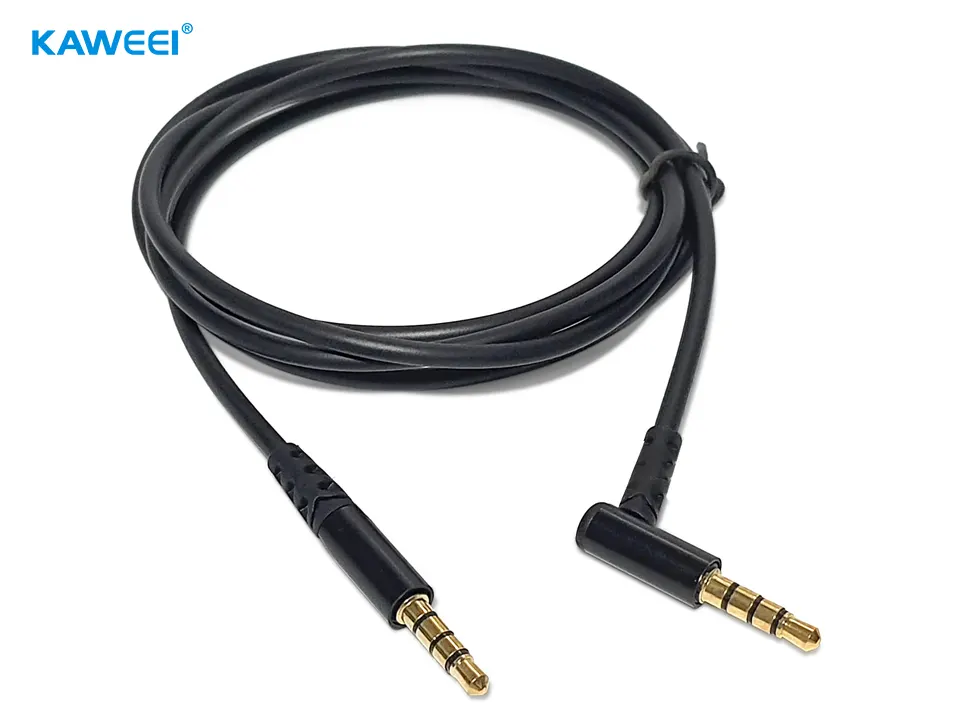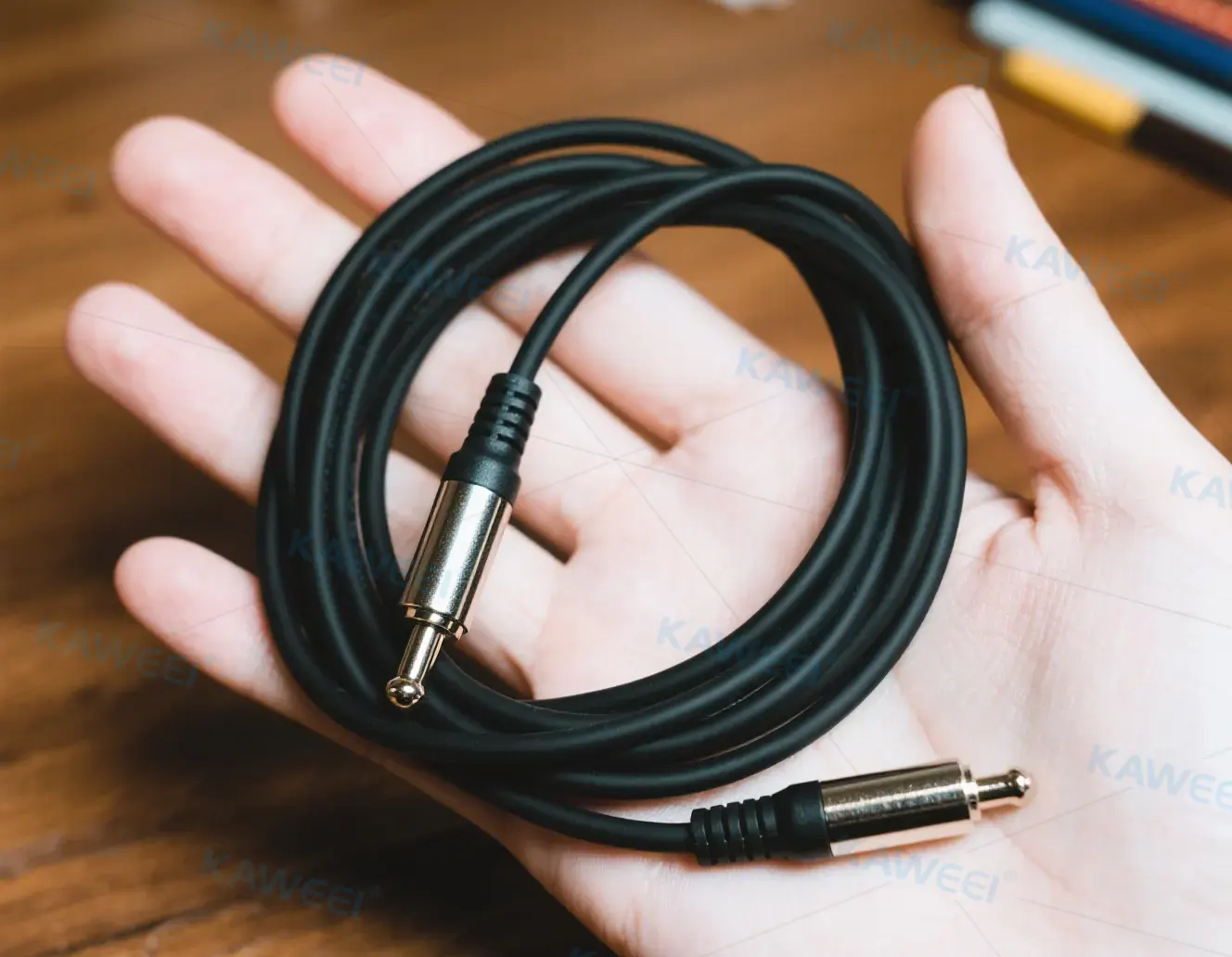AUX Cables
An AUX cable (short for Auxiliary cable) is a commonly used analog audio interconnect. It is typically used to connect audio source devices such as smartphones, computers, and MP3 players to audio playback devices such as speakers, headphones, and car stereos.

AUX cables usually feature male-to-male connectors on both ends, often with the same interface type.
For example:

An AUX cable’s primary function is to transmit analog audio signals between devices, serving as either an audio input or output line. The signal transmitted is typically stereo analog audio.
Key Features of an AUX Cable:
- Simple functionality: Transmits audio only (no video or data).
- Plug and play: No drivers or software required.
- Wide compatibility: Works with any device that has a 3.5mm audio jack.
- Average sound quality: As it transmits analog signals, it is prone to interference and typically does not match the audio fidelity of digital alternatives such as optical or HDMI.
Common Types of AUX Cables:
1. 3.5mm ↔ 3.5mm AUX Cable
- Both ends are standard 3.5mm stereo mini plugs.
- Applications: Smartphones or computers connected to speakers, car stereos playing music from a mobile device, tablets connected to powered speakers.
- Most common type of AUX cable.
2. 3.5mm ↔ RCA
- One end is a 3.5mm plug, and the other end splits into red and white RCA plugs.
- Applications: Connecting phones to older home audio systems or amplifiers, audio output from computers to TVs or stereo receivers.
- Ideal for interfacing with legacy audio equipment.

3. 3.5mm ↔ 6.35mm
- One end is a standard 3.5mm plug, and the other is a 6.35mm TRS plug.
- Applications: Connecting smartphones or computers to professional headphone amplifiers, mixers, or guitar amps.
- Suitable for semi-professional or professional audio environments.
4. 6.35mm ↔ 6.35mm
- Both ends are 6.35mm TRS plugs.
- Applications: Interconnecting musical instruments, audio mixers, amplifiers, or PA systems.
- Commonly used in stage setups, recording studios, and professional audio workstations.
5. 3.5mm TRRS AUX Cable
- Features a 4-conductor plug (Tip-Ring-Ring-Sleeve).
- Applications: Headsets with microphone functionality, mobile headsets, or devices with inline control buttons.
- Supports stereo audio plus microphone signal transmission.
How to Customize an AUX Cable?
To custom-build an AUX cable tailored to your application, follow these key steps:
1. Identify the Devices to be Connected
- Clearly define the source and destination devices and their respective audio interfaces. This determines the plug types and wiring requirements.
2. Specify the Connector Type
- TRS (Tip-Ring-Sleeve): Supports stereo audio transmission.
- TRRS (Tip-Ring-Ring-Sleeve): Supports stereo audio + microphone.
- Also decide whether you need straight or right-angle (L-shaped) plugs for space-constrained installations.
3. Choose Cable Material and Construction
- Select cable materials based on your environment and performance needs:
- OFC (Oxygen-Free Copper) or silver-plated copper for better conductivity.
- Shielded designs (braided, foil, or both) to minimize EMI/RFI interference.
- Durable jacketing (e.g., PVC, TPE, or braided nylon) for flexibility and abrasion resistance.
4. Determine the Required Length
- Choose a cable length appropriate for your setup:
- 0.5–1 meter: For compact use (e.g., car or desktop)
- 1.5–2 meters: For home audio systems
- 3+ meters: For studio or stage use
AUX Cable FAQs:
1: What devices are compatible with the Kaweei custom AUX cable?
- Smartphones (with 3.5mm jack)
- Tablets
- Car stereos
- External speakers
- Headphone amplifiers
Note: For devices without a 3.5mm port (e.g. iPhones or newer Android phones), please use a certified adapter.
2: Is the cable durable and tangle-free?
Yes. The Kaweei AUX cable features a custom-built harness with a durable TPE or braided exterior to resist tangling and wear:
- Passed 10,000+ bend lifespan test
- Reinforced aluminum alloy or gold-plated connectors
- Ideal for everyday use, car environments, or high-frequency professional setups
3: Does it deliver high-quality sound without interference?
Absolutely. The Kaweei cable uses high-purity oxygen-free copper and dual shielding to reduce signal loss and block interference:
- Clear stereo sound
- Minimal noise or distortion
- No noticeable delay during playback
- Tip: Avoid placing the cable near strong electronic interference sources for the best performance.


